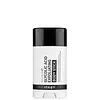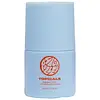What's inside
What's inside
 Key Ingredients
Key Ingredients

 Benefits
Benefits

 Concerns
Concerns

 Ingredients Side-by-side
Ingredients Side-by-side

Octyldodecanol
EmollientCoco-Caprylate/Caprate
EmollientButyrospermum Parkii Butter
Skin ConditioningHelianthus Annuus Seed Wax
Skin ConditioningGlycolic Acid
BufferingOzokerite
Emulsion StabilisingCetearyl Alcohol
EmollientWater
Skin ConditioningPEG-100 Stearate
Glyceryl Stearate
EmollientSimmondsia Chinensis Seed Oil
EmollientSalicylic Acid
MaskingCocamidopropyl Dimethylamine
EmulsifyingAscorbyl Palmitate
AntioxidantTocopherol
AntioxidantHelianthus Annuus Seed Oil
EmollientOctyldodecanol, Coco-Caprylate/Caprate, Butyrospermum Parkii Butter, Helianthus Annuus Seed Wax, Glycolic Acid, Ozokerite, Cetearyl Alcohol, Water, PEG-100 Stearate, Glyceryl Stearate, Simmondsia Chinensis Seed Oil, Salicylic Acid, Cocamidopropyl Dimethylamine, Ascorbyl Palmitate, Tocopherol, Helianthus Annuus Seed Oil
Water
Skin ConditioningSalix Alba Bark Extract
AstringentGlycolic Acid
BufferingPotassium Hydroxide
BufferingPhenoxyethanol
PreservativePolysorbate 20
EmulsifyingCamellia Sinensis Leaf Extract
AntimicrobialCentella Asiatica Extract
CleansingGlycerin
HumectantSalicylic Acid
MaskingHydroxyethylcellulose
Emulsion StabilisingNiacinamide
SmoothingZinc PCA
HumectantAllantoin
Skin ConditioningDisodium Phosphate
BufferingSodium Phosphate
BufferingPolysorbate 60
EmulsifyingSodium Nitrate
SoothingGlyoxal
AntimicrobialPotassium Sorbate
PreservativeCitric Acid
BufferingSodium Benzoate
MaskingButylene Glycol
HumectantWater, Salix Alba Bark Extract, Glycolic Acid, Potassium Hydroxide, Phenoxyethanol, Polysorbate 20, Camellia Sinensis Leaf Extract, Centella Asiatica Extract, Glycerin, Salicylic Acid, Hydroxyethylcellulose, Niacinamide, Zinc PCA, Allantoin, Disodium Phosphate, Sodium Phosphate, Polysorbate 60, Sodium Nitrate, Glyoxal, Potassium Sorbate, Citric Acid, Sodium Benzoate, Butylene Glycol
 Reviews
Reviews

Ingredients Explained
These ingredients are found in both products.
Ingredients higher up in an ingredient list are typically present in a larger amount.
Glycolic Acid is arguably the most famous alpha hydroxy acid (AHA) with tons of research backing its benefits.
It is found naturally in sugar cane but the form used in skincare is usually synthetic for purity and stability.
Glycolic acid removes the top layer of dead skin cells to allow newer and fresher ones to emerge.
AHAs work by breaking down the structural “glue” that holds old skin cells in place. When that buildup is gone, your skin can renew itself more efficiently.
Research also shows glycolic acid stimulates collagen production, helping to firm and thicken the skin over time. This is one of its biggest advantages over other AHAs.
Overall, glycolic acid helps with:
Fun fact: Glycolic acid boosts skin hydration by helping it produce molecules that increase hyaluronic acid naturally.
To work best, glycolic acid products should have a pH between 3-4 (that’s where exfoliation is most effective but still gentle on skin).
The pH and concentration of a product are key to its effectiveness:
It is normal to feel a slight stinging sensation when using glycolic acid. This usually fades as your skin adjusts.
Because glycolic acid has the smallest molecular size in the AHA family, it can penetrate deeper, which enhances its effectiveness but also makes it more likely to irritate sensitive skin.
If your skin is very sensitive or prone to rosacea, glycolic acid may be too strong; in that case, try milder options like lactic acid or a PHA instead.
Recent studies suggest glycolic acid might even help protect against UV damage. But don’t skip sunscreen! Freshly exfoliated skin is more sensitive to the sun.
Glycolic acid is a skincare superstar. It smooths, brightens, hydrates, and firms the skin. Unless you’re highly sensitive, it’s well worth adding to your routine.
Read more about some other popular AHA's here:
Learn more about Glycolic AcidSalicylic Acid (also known as beta hydroxy acid or BHA) is a well-known ingredient for treating skin that struggles with acne and clogged pores. It exfoliates both the skin's surface and deep within the pores to help clear out buildup, control oil, and reduce inflammation.
Unlike AHAs (alpha hydroxy acids), salicylic acid is oil-soluble. This allows it to penetrate into pores which makes it especially effective for treating blackheads and preventing future breakouts.
Salicylic acid is also known for its soothing properties. It has a similar structure to aspirin and can calm inflamed or irritated skin, making it a good option for acne-prone skin that is also sensitive.
Concentrations of 0.5-2% are recognized by the U.S. FDA as an over-the-counter topical acne product.
It can cause irritation and/or dryness if one's skin already has a compromised moisture barrier, so it's best to focus on repairing that before introducing this ingredient into your routine.
While salicylic acid does not increase sun sensitivity, it’s still important to wear sunscreen daily to protect your skin.
If you are looking for the ingredient called BHA or Butylated Hydroxyanisole, click here.
Learn more about Salicylic AcidWater. It's the most common cosmetic ingredient of all. You'll usually see it at the top of ingredient lists, meaning that it makes up the largest part of the product.
So why is it so popular? Water most often acts as a solvent - this means that it helps dissolve other ingredients into the formulation.
You'll also recognize water as that liquid we all need to stay alive. If you see this, drink a glass of water. Stay hydrated!
Learn more about Water